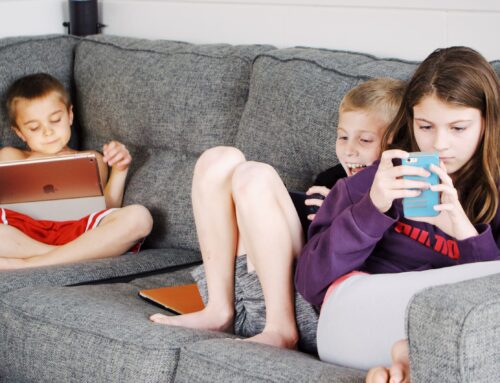Educators are always requesting more resources and innovative teaching methods to create an engaging and effective learning environment for students. One research-based strategy that is a unique part of FocusedKids’ toolkit is using puppets in the classroom setting to teach kids about the brain. This part of our model is rooted in Gestalt play therapy where puppets act as a safe buffer between a child and adult, allowing the child to express themselves more comfortably. In this article, we explore ways that teachers can use puppets to build safe relationships with students, enhance engagement, and add more joy to daily routines.
The Magic of Puppets
Safe relationships are the foundation of FocusedKids’ social emotional model. Only once students feel secure can they begin the journey of practicing and acquiring the skills for self-regulation. For students who struggle to communicate with adults, a puppet can provide that safe space for connection.
Puppets can also enhance the overall culture of the classroom, making learning a captivating and memorable experience. Some teachers use puppets to teach FocusedKids lessons, while others utilize them throughout the day to break down barriers and foster engagement.
Introducing puppets into the classroom can work wonders for highly dysregulated students who find it difficult to stay focused during circle time or group lessons. They instantly grab students’ attention, fostering a sense of awe and curiosity that paves the way for deeper, more effective learning.

Want More Calm & Connection in the Classroom?
The FocusedKids online SEL training course can help you master the skills of mindful self-regulation.
The Three Brain Buddies
In the FocusedKids model, three puppet characters play vital roles in teaching children about three key parts of the brain:
- Guard Dog represents the amygdala, the emotional center of the brain. Guard Dog helps children understand and manage their emotions.
- Wise Owl symbolizes the prefrontal cortex, which guides students in developing cognitive skills. Wise Owl supports decision-making, and problem-solving.
- Ms. Elephante depicts the hippocampus, the memory and learning zone. Ms. Elephante encourages students to explore and retain new information.
This video demonstration (in English and Spanish) can help educators become comfortable using the Brain Buddies to teach our core lessons.
Download a printable PDF of all three puppets: color them, cut them out, and glue/tape them to popsicle sticks.
Modeling and Practice
While the benefits of puppetry are clear, some educators may face barriers in incorporating this technique into their teaching methods. The key is practice and repetition. For more modeling, check out our deep dive on using the FocusedKids puppets. By getting comfortable with using puppets, teachers not only overcome this hurdle but also fire new neurons in their brains. The more educators practice puppet-based interactions, the more adept they become at leveraging this tool in the classroom.
Start by looking for ways to incorporate puppets into daily routines. Teachers can choose opportune moments throughout the day to introduce the puppet, offering an alternative to adult-led communication. Whether it’s the morning greeting to welcome students into the classroom or the afternoon slump when students are disengaged, the puppet becomes a whimsical ally. Puppets can even take the lead in giving directions or offering hugs and high fives during tricky transitions (like after recess). This strategic integration of puppets transforms mundane moments into engaging and meaningful interactions, reinforcing the safe and nurturing atmosphere essential for learning.

Subscribe to the FocusedKids Newsletter
Make life a little more workable for you and the children you care for. Get mindful resources and tips from the FocusedKids trainers deliver to your inbox.
About the Author
Shayla Groves
Shayla is the designer, marketing specialist, and brand strategist behind FocusedKids. As the mother of two, Shayla is well versed in all things parenting.

